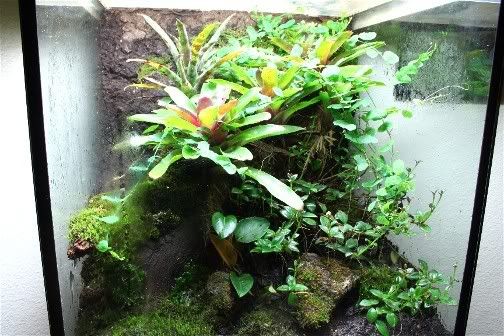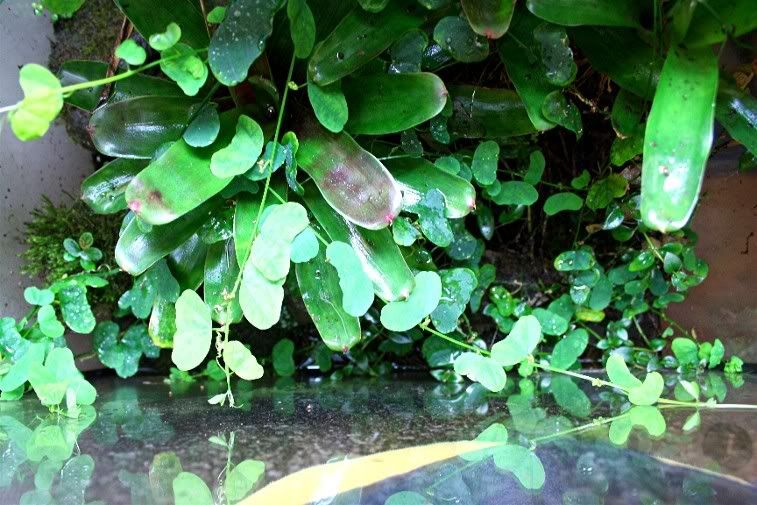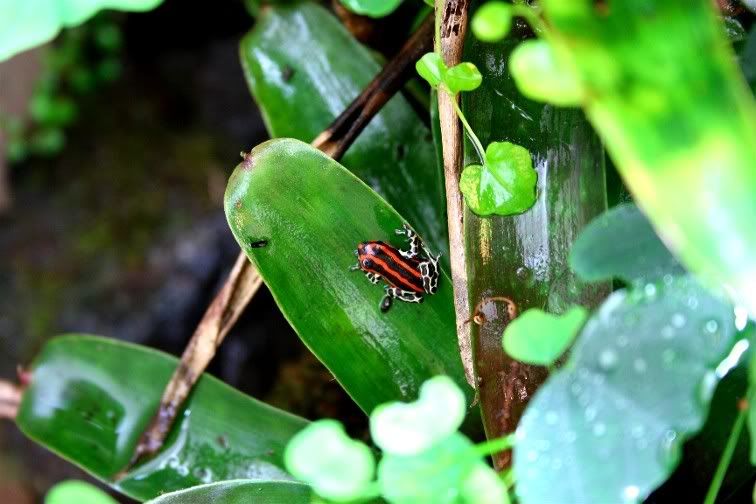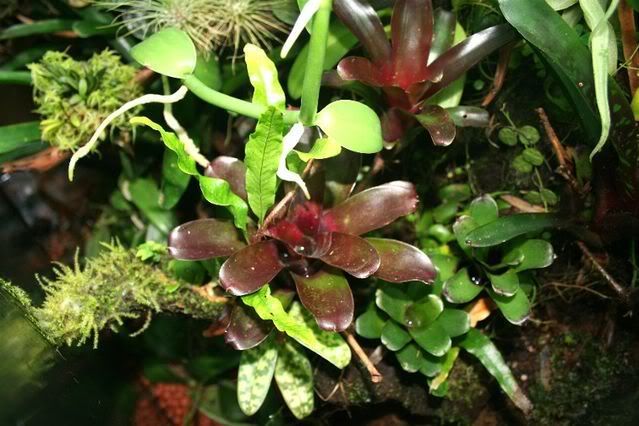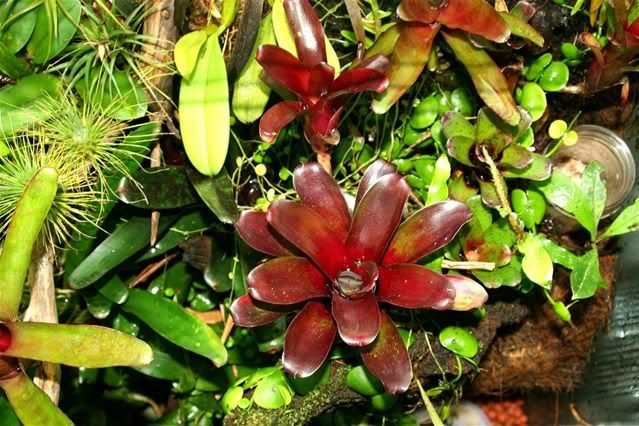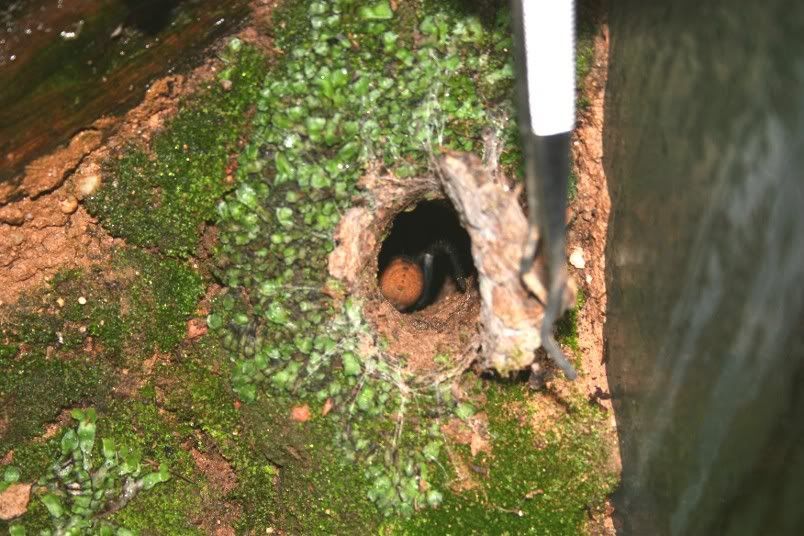i collected dart frogs for many years and made elaborate setups for them with false backgrounds and false bottoms. i thought, why not apply this to salamanders?? so i am going to start many projects with salamander setups.naturalistic setups with live, thriving plants, moss, and good lighting with cool temps are my goal. i just finished a really simple one. enough to get sals into it. i have a few finishing touches to do but that will be easy. the pics are kinda bad, but you get the idea. here is a short, simple step by step on how i made it. i will be posting a much more detailed how to later on making false backgrounds that can support 50+ lbs of rock!! (i have done this personally) and i will explain why i do the things i do. but for now.. here is a simple quick one.
i first started off with some rocks and an idea. i then used great stuff expandable foam to fill up space and secure the rocks.

i then used gorilla glue to apply substrate (sand in this case) to cover the expandable foam. gorilla glue works MUCH better than silicone.

ALWAYS be sure to wear latex gloves when dealing with expandable foam or gorilla glue. this stuff is sticky and doesnt come off easily.

evenly spread the gorilla glue as well as you can

once the gorilla glue is evenly spread, HEAVILY coat it with substrate (in this case, sand) and squish it into the gorilla glue. the gorilla glue expands while it cures, so you must continually squish it down and make sure it doesnt bubble through the substrate. it takes about 15 to 20 minutes to fully cure.


once the glue has cured, you simply take a shop vac and vacuum the excess substrate. the end product is very nice. you will most likely have to fix spots that were missed, but this is normal. i suggest doing this step in sections as it can get overwhelming otherwise. here is an example of sectioning it off.

once vacuumed, simply fill in the gaps.
with all the expandable foam covered and glue cured, simply vacuum up all excess and the end result is very nice.


now, in my setup, i have a filter int here. i left a hole in the expandable foam for the filter to sit. you must make sure there is a way for water to flow from the pond area under the foam to reach the filter. this is simple by taking a plastic tubing and lasying it down from one end of the aquarium to the other where the pump is going to be. make sure you do this before you add the expandable foam.


the mosses in this setup are temprate mosses and i expect them to die. however, with proper lighting and air flow, many mosses come back via spores or new growth from the die back. this combined with cool temps for the sals, mosses should eventually take hold very well in this setup.
-josh
i first started off with some rocks and an idea. i then used great stuff expandable foam to fill up space and secure the rocks.

i then used gorilla glue to apply substrate (sand in this case) to cover the expandable foam. gorilla glue works MUCH better than silicone.

ALWAYS be sure to wear latex gloves when dealing with expandable foam or gorilla glue. this stuff is sticky and doesnt come off easily.

evenly spread the gorilla glue as well as you can

once the gorilla glue is evenly spread, HEAVILY coat it with substrate (in this case, sand) and squish it into the gorilla glue. the gorilla glue expands while it cures, so you must continually squish it down and make sure it doesnt bubble through the substrate. it takes about 15 to 20 minutes to fully cure.


once the glue has cured, you simply take a shop vac and vacuum the excess substrate. the end product is very nice. you will most likely have to fix spots that were missed, but this is normal. i suggest doing this step in sections as it can get overwhelming otherwise. here is an example of sectioning it off.

once vacuumed, simply fill in the gaps.
with all the expandable foam covered and glue cured, simply vacuum up all excess and the end result is very nice.


now, in my setup, i have a filter int here. i left a hole in the expandable foam for the filter to sit. you must make sure there is a way for water to flow from the pond area under the foam to reach the filter. this is simple by taking a plastic tubing and lasying it down from one end of the aquarium to the other where the pump is going to be. make sure you do this before you add the expandable foam.


the mosses in this setup are temprate mosses and i expect them to die. however, with proper lighting and air flow, many mosses come back via spores or new growth from the die back. this combined with cool temps for the sals, mosses should eventually take hold very well in this setup.
-josh




